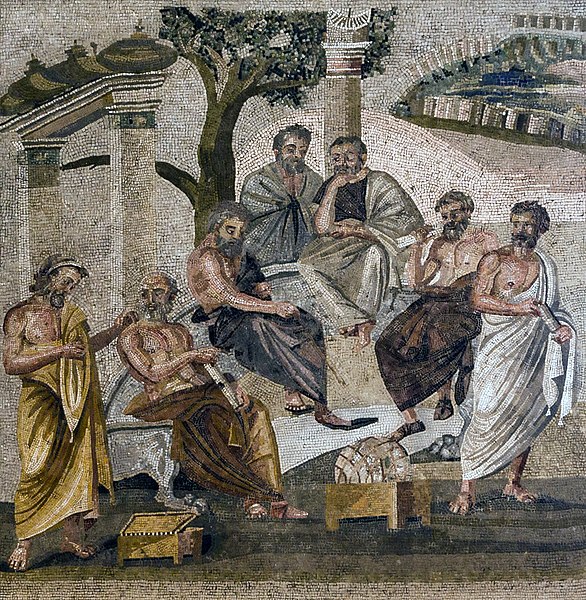History of Animals is one of the major texts on biology by the ancient Greek philosopher Aristotle, who had studied at Plato's Academy in Athens. It was written in the fourth century BC; Aristotle died in 322 BC.
Historia animalium et al., Constantinople, 12th century (Biblioteca Medicea Laurenziana, pluteo 87.4)
Aristotle spent many years at Plato's academy in Athens (Mosaic, 1st century, Pompeii).
Scaliger's edition with his commentary, Toulouse, 1619
Aristotle observed that the octopus can change colour when disturbed.
Aristotle's biology is the theory of biology, grounded in systematic observation and collection of data, mainly zoological, embodied in Aristotle's books on the science. Many of his observations were made during his stay on the island of Lesbos, including especially his descriptions of the marine biology of the Pyrrha lagoon, now the Gulf of Kalloni. His theory is based on his concept of form, which derives from but is markedly unlike Plato's theory of Forms.
Among Aristotle's many observations of marine biology was that the octopus can change colour when disturbed.
Aristotle spent some 20 years at Plato's academy in Athens.
Aristotle argued by analogy with a woodcarving that a thing takes its form both from its design and from the material used.
Embryogenesis: Aristotle saw the chick embryo's heart beating. 19th century drawing by Peter Panum






